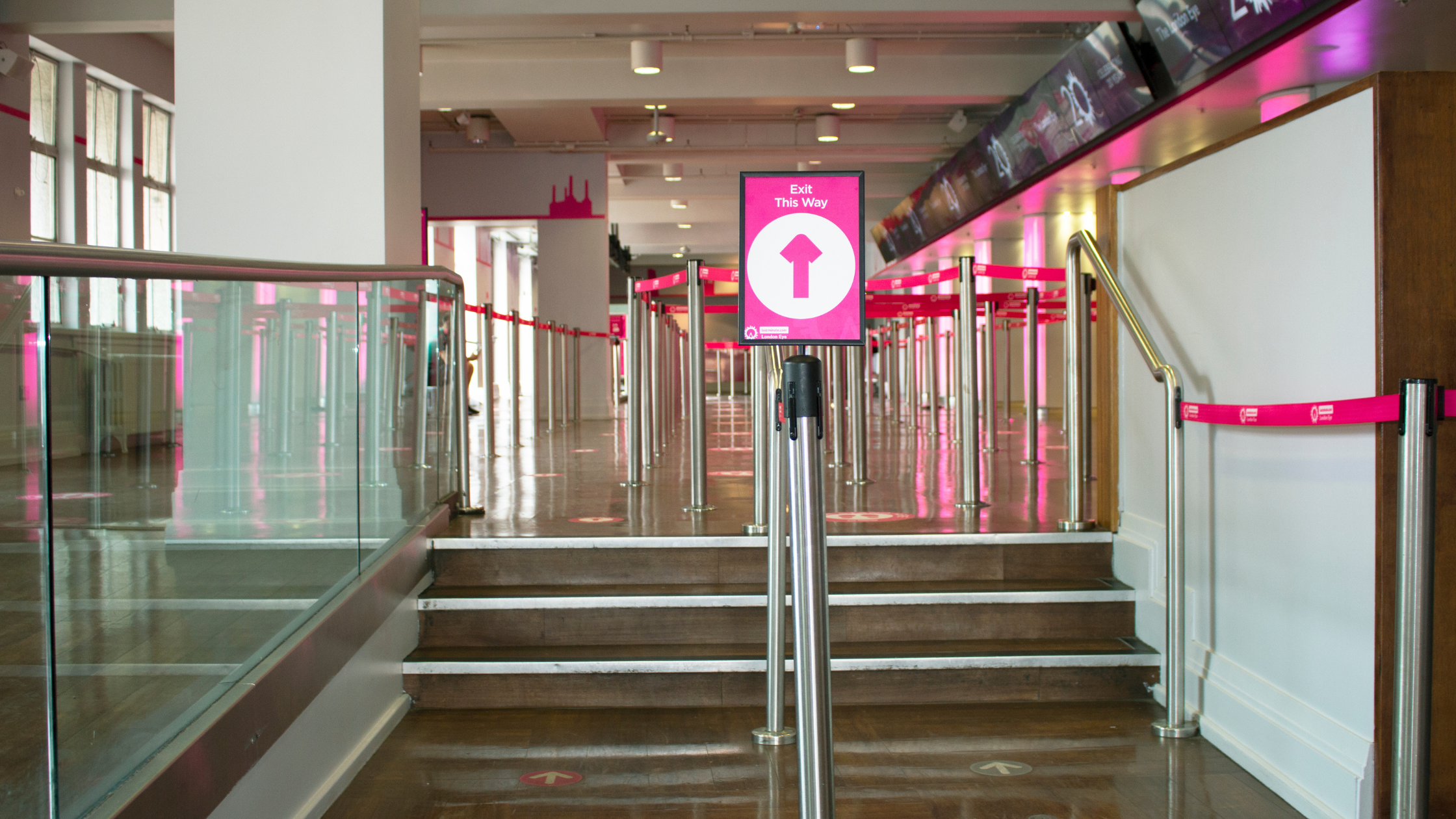- Home
- Sectors
- Solutions
- Tensabarrier®
- Tensamedia® Wayfinding and Signage
- Lawrence® Post & Rope
- Tensator® Airport Passenger Guidance System
- Electronic Queuing – eQ™
- Tensaguide® Modular Barrier System
- Tensator Micam Protection – TMP
- Safety Solutions
- Access Control
- In-Queue Merchandising
- Virtual Queuing – VQMS
- Tensator® Virtual Assistant
- Custom & Bespoke Solutions
- Resources
- About
- Contact Us
- Shop
 English (English)
English (English)
15
Dec

UK Customer’s Perceptions of Queuing
With the festive season in full swing, it’s likely you’ve found yourself caught up in a queue. Do you ever think about what fellow queuers could be thinking about? The UK stereotype of the ‘polite queuer’ has been called into question in a national study about consumer habits at the point of purchase. As retail queue management experts, we’ve performed our own research about the psychology of queuing in the hope of deepening our understanding of perceptions of queuing in a retail environment.
- Research found that 81% will critique other shoppers’ friendliness towards staff, as well as judging the contents of their shopping basket and even their fellow queuers’ clothing.
- ‘Queue jumping’ is the top frustration, with 92% citing the habit as ‘very annoying’.
- 2 out of 3 people won’t confront a queue jumper directly, preferring instead to complain loudly to other people nearby, ignore them, or tut loudly.
Kevin Hickson, Tensator’s UK General Manager, said: “The results show that Brits aren’t as polite as our national stereotype suggests – but that certainly doesn’t mean the majority of us are brave enough to confront our queuing annoyances.”
Other results also included:
- Over a quarter of those surveyed cited that they have the least patience when queuing in supermarkets
- 44% of people aren’t prepared to wait more than 6 minutes in a supermarket queue
- 3 out of 4 people said within touching distance of clothes was deemed ‘too close’ to stand next to someone in a queue
- Checking social media is a popular way to wait, with 64% admitting this was very likely or certain to happen
- Less than 3% of people would spend their time speaking to other people in the queue
Psychology of queuing and how this can be harnessed to improve queuing experience
David Maister, an expert on business management practices, defined key principles about how people experience waiting and what businesses could do to make a wait feel less onerous.
Unfair waits are longer than equitable waits
In situations where there is no visible order to the waiting line, the level of anxiety demonstrated is high. Customers in these types of queues quite often will become agitated, as they are unsure whether their priority in the line is being preserved.
A queue system assures users of social justice, i.e. a guarantee that they will be served in the order that they arrived. Eliminating the concern over queue jumpers allows users to relax, making the waiting experience more pleasant. Tensabarriers help to organise queues and remove the need to actively protect a position in the queue.
Unoccupied time feels longer than occupied time
We all know that a human’s perception of time varies. Time can either go by quickly or slowly, depending on how busy someone is. This is also true for queues. Customers stood in a queue with nothing to do or see can make the wait seem much longer.
Offering activities in a queue environment and distracting customers can make the queue seem a lot faster. Distractions include in-queue merchandising, or alternatively entertainment such as providing the news and weather information.
“Queue Anxiety” can make the wait seem longer
The fear of being forgotten and the fear of having chosen the “wrong” queue can lead to a customer feeling anxious.
Implementing signage at the start, end and throughout your queue can help inform customers what they’re queuing for and that their interests are your priority. This will help reduce anxiety and could provide potential revenue opportunities in the form of advertisements and informational notices.
Furthermore, ask yourself (and your customers) about other causes of queue anxiety and find ways to remove the worry.
Uncertain waits are longer than known, finite waits
It’s said that the most profound source of dissatisfaction in queues is how long the wait will be. If you do not know how long the wait will be, you find it hard to settle and relax as you are left constantly wondering how much longer you will have to wait.
Virtual displays such as Tensator’s InQ-TV within a queue can let customers know on a live basis how long their wait is likely to be, eliminating the unknown aspect of queuing.
At Tensator, we listen to real-life shoppers as well as experts in the field when developing products to make the queuing experience as pleasant as possible. For more information on our retail solutions, please feel free to download our guide.


 How to create a profitable queue management system
How to create a profitable queue management system  In-Queue Merchandising
In-Queue Merchandising  Retail
Retail 


